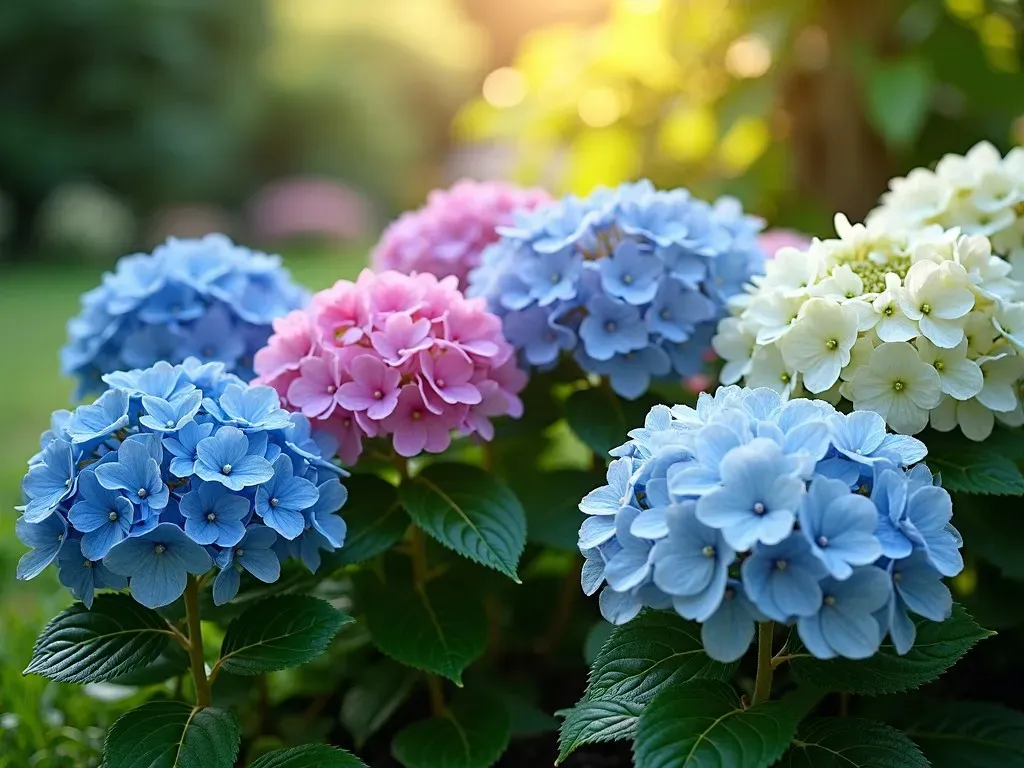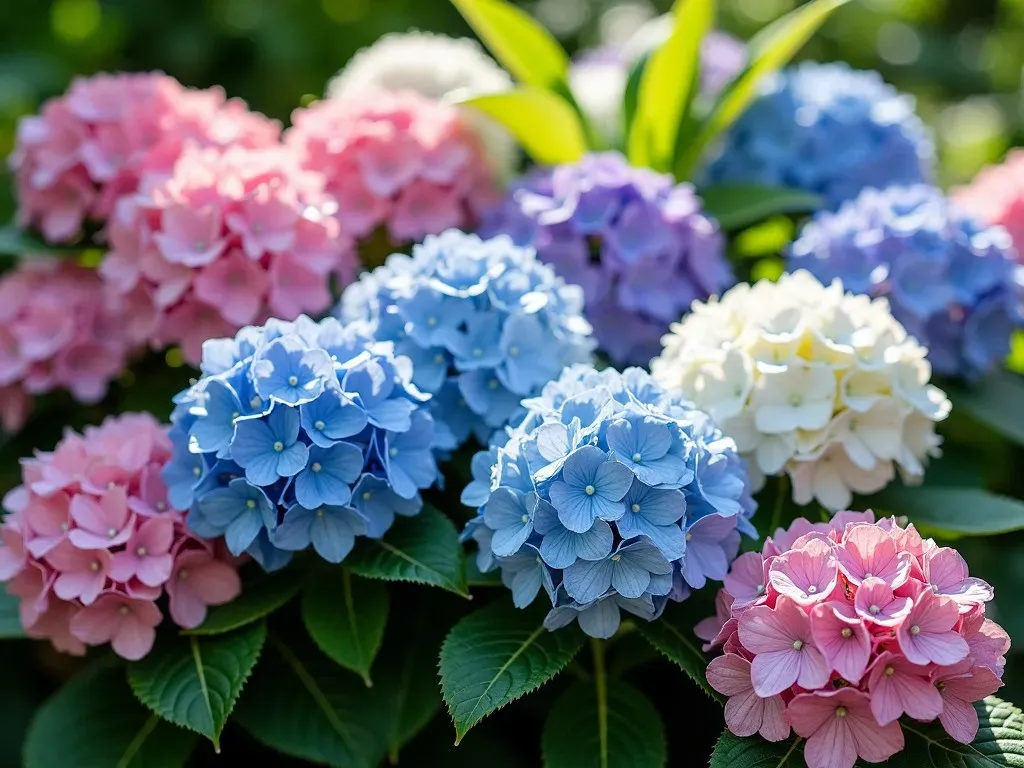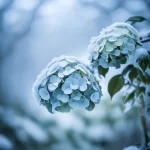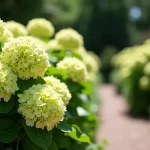Dwarf hydrangeas, also known as small hydrangea bushes, are compact varieties of this beloved flowering shrub that bring vibrant colors and lush blooms to any garden without taking up much space. Perfect for smaller gardens, containers, or even as decorative accents on patios, these mini hydrangeas provide a stunning visual impact while being easy to maintain.
Overview of Dwarf Hydrangeas
Dwarf hydrangeas are characterized by their shorter stature, usually ranging from 2 to 3 feet tall, compared to their larger counterparts that can grow 5 to 6 feet or more. They feature all the visual appeal and large flower clusters typical of hydrangeas but fit perfectly into compact landscapes and containers. Dwarf varieties thrive in various conditions, making them versatile choices for gardening enthusiasts.
Key Features of Dwarf Hydrangeas
- Size: Typically reaches heights of 2-3 feet.
- Colors: Blooms can range from white, pink, blue, and purple depending on the variety and soil pH.
- Sunlight Requirements: Adaptable; many enjoy full sun but also tolerate partial shade.
- Bloom Time: Most dwarf hydrangeas bloom from mid-summer to early fall.

Popular Dwarf Hydrangea Varieties
The market is replete with various dwarf hydrangea species. Here’s a breakdown of some of the most popular options:
| Variety | Height | Flower Color | Sunlight Preference | Hardiness Zones |
|---|---|---|---|---|
| ‘PeeGee’ (Paniculata) | 3-5 ft | White to pink | Full sun to partial shade | 3-8 |
| ‘Endless Summer’ (Bigleaf) | 2-3 ft | Blue, pink, lavender | Partial shade | 4-9 |
| ‘Little Lime’ (Paniculata) | 3-5 ft | Light green to white | Full sun | 3-8 |
| ‘Bobo’ (Paniculata) | 2-3 ft | White to light pink | Full sun | 3-8 |
| ‘Bluebird’ (Bigleaf) | 2-3 ft | Blue | Partial shade | 5-9 |
Growth Conditions & Care Tips
To successfully cultivate dwarf hydrangeas, consider the following aspects of growth conditions and care:
- Soil: Dwarf hydrangeas prefer well-drained, fertile soil with a pH level that varies depending on the desired bloom color (acidic for blue, neutral for pink).
- Watering: Regular watering during dry spells is crucial for their growth; however, ensure the soil stays slightly moist, not soggy.
- Pruning: Prune after flowering in the fall or towards late winter to promote better blooms for the following year.
- Fertilization: Utilize a balanced fertilizer in spring to support the blooming process.
Ideal Conditions for Planting
Dwarf hydrangeas can enhance any outdoor space, but knowing where and how to plant them will provide optimal growth.
- Location: Select areas with either full sun (6-8 hours) or partial shade, depending on the variety.
- Spacing: When planting in groups, allow for adequate spacing to ensure airflow and proper growth. Typically, spacing of 3-4 feet apart is recommended for larger varieties.

Reference Video
Best Practices for Dwarf Hydrangeas in Sunlight
Dwarf varieties that thrive in full sun must be cared for differently from those that prefer shade. Following best practices can promote vibrant blooms and healthy plants:
- Choosing the Right Varieties: Select particularly sun-loving varieties like ‘Bobo’ or ‘Little Lime’ for sunny patches.
- Mulching: Applying mulch around the root zone will help retain moisture and keep the roots cool, especially during hot summer months.
- Regular Watering: Ensure consistent watering to help them cope with the heat and prevent wilting.
Dwarf Hydrangea Size Comparison
When considering dwarf hydrangeas for your garden, comparing them to standard-sized hydrangeas can illustrate their compact nature effectively:
| Type | Average Height | Average Width |
|---|---|---|
| Dwarf Hydrangea | 2-3 ft | 2-3 ft |
| Standard Hydrangea | 5-6 ft | 4-5 ft |
This contrast shows how dwarf hydrangeas can fit into smaller spaces without sacrificing beauty.
Frequently Asked Questions (FAQs)
1. What is the smallest dwarf hydrangea variety?
The ‘Pipsqueak’ hydrangea is often considered among the smallest, reaching only about 1.5 feet tall at maturity.
2. Can dwarf hydrangeas grow in full sun?
Yes, many dwarf hydrangeas thrive in full sun, provided they receive adequate water during hot weather.
3. How often should I water my dwarf hydrangeas?
Water them deeply once a week during dry spells, and more frequently if planted in full sun.
4. Should I prune my dwarf hydrangeas?
Yes, pruning after the blooming season helps promote stronger growth and more robust flowers in the following year.
5. How do soil pH levels affect dwarf hydrangea colors?
Acidic soil usually produces blue flowers, while alkaline soil tends to yield pink blooms. Club soil amendments as required to achieve desired color outcomes.
For further reading on dwarf hydrangeas, consider visiting Proven Winners for additional resources and tips.

Dwarf hydrangeas can bring life and color to any garden. With their compact size and stunning blooms, they are an ideal choice for those looking to create a vibrant landscape without committing to significant space. Whether used as standalone features or as part of a larger garden plan, dwarf hydrangeas deserve a special place in your outdoor space.


